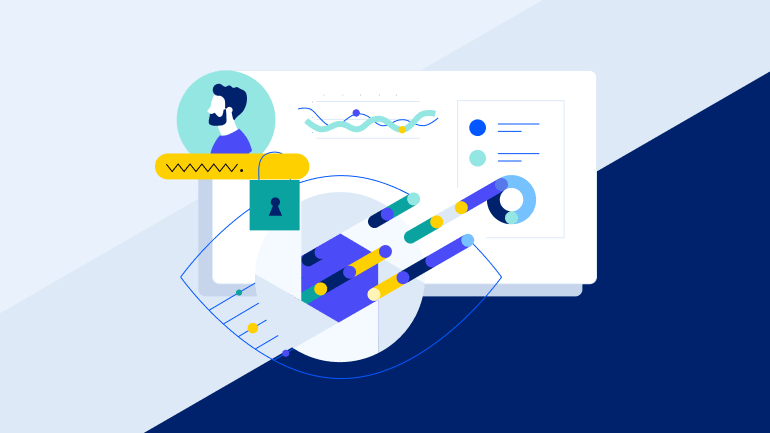The Role of Artificial Intelligence (AI) in Digital Transformation

In today's fast-paced digital landscape, it's not enough for companies to merely adapt to change; they must lead the way in embracing transformative technologies because it’s the only way to grow and stay competitive. In this blog, we'll explore how the fusion of digital transformation and AI transformation is shaping business environments around us.
The Evolution of Digital Transformation
The journey of digital transformation began in the late 20th century, but its impact on costs and revenue wasn’t apparent until the 21st century. Companies started incorporating digital technology into their business processes, marking the beginning of a significant shift in business operations. However, it took time until all industries jumped on the digital transformation train and began realizing its impact.
In the late 1990s and early 2000s, some companies failed to grasp the urgency of digital transformation and paid the price. Blockbuster (a giant in video rentals) did not adapt to the digital era and filed for bankruptcy in 2010. Similarly, Kodak (once a giant photography powerhouse) struggled to embrace digital photography and lost its market leadership. Digital transformation is not just about moving business to digital environments or platforms, it’s also about automating and upgrading processes. IKEA, for example, implemented new technologies to enhance the shopping experience, such as acquiring TaskRabbit for furniture assembly services and using augmented reality (AR) in their IKEA Place app for furniture selection.
A Glimpse Into the Recent History of AI
In the last 15 years, we’ve witnessed an unprecedented AI renaissance, fueled by remarkable milestones:
- In 2006, Geoffrey Hinton's research on deep neural networks reignited interest in AI.
- By 2012, the famous ImageNet competition demonstrated the capabilities of deep learning.
- In 2015, DeepMind's AlphaGo defeated the world champion in the ancient game of Go.
Today, AI is driving significant advancements in healthcare, finance, manufacturing and other industries. For instance, the healthcare industry uses AI for early disease detection with an accuracy rate of 94% in some cases.
Interestingly, AI has emerged beyond digital transformation. While digital transformation was about adopting technology to optimize operations, AI transformation is aimed at identifying activities that can shift away from human hands. These two things are no longer parallel processes, they are now inextricably linked together.
Where to Start with AI Adoption: Recommendations for Companies and Leaders
- Automate Routine Tasks: AI excels at handling mundane tasks. Companies can free up human resources and enable AI to deal with repetitive aspects, reducing the risk of human error. Automating data analysis, for example, can significantly reduce the time spent manually sorting data. Each company has routines that people hate to do—automating these tasks will garner support and enthusiasm from your employees.
- Boost Cybersecurity: The increasing volume and complexity of cyber threats have left cybersecurity teams overwhelmed. IT teams across the world don’t have the capacity to handle the uptick in network and security-related tasks. AI-driven security tools can analyze vast datasets in real-time, identify anomalies and respond faster to potential threats. According to Statista research data from 2019, 75% of enterprises are relying on AI solutions for maintaining network security and forming security automation frameworks. By leveraging AI in cybersecurity, companies can stay one step ahead of ever-evolving threats. Security and network teams overwhelmed by analysis routines and noise coming from monitoring systems will likely benefit greatly from AI adoption.
- Automate support replies: Popular generative AI has advanced a great deal in communication and can be educated based on your company emails, chats, communications, knowledge bases and documents. With such a foundation, there are now hypotheses around the world that generative AI may be even more advanced than people working in a first-line customer support role for one year.
- Use AI for Strategic Planning: AI provides predictive analytics, helping companies forecast various areas—from cash flow optimizations to business model switches. With those benefits in mind, we recommend adopting AI as part of your network and security strategy. Building a network growth strategy is difficult and AI can help provide the required data to help craft a plan. You can also use AI to predict network issues and highlight existing vulnerabilities. For instance, AI can predict network congestion before it occurs, allowing for timely adjustments.
In today's world, companies face unprecedented challenges. They must navigate the complexities of cybersecurity threats, increased data volumes and the demands of a rapidly evolving technological environment. The overabundance of data and alerts leave IT teams exhausted and unable to differentiate the real threats from the noise. With its advanced algorithms and analytics, AI can help empower companies to automate routine tasks, analyze vast amounts of data for anomalies and predict network issues before they disrupt operations.
Conclusion
In conclusion, strategically adopting these technologies is paramount as businesses embark on the transformative journey fueled by AI. This technology helps companies revolutionize operations, from optimizing processes to enhancing decision-making. However, it's crucial to recognize that the success of any AI initiative is intrinsically linked to the health and efficiency of the network on which it operates.
